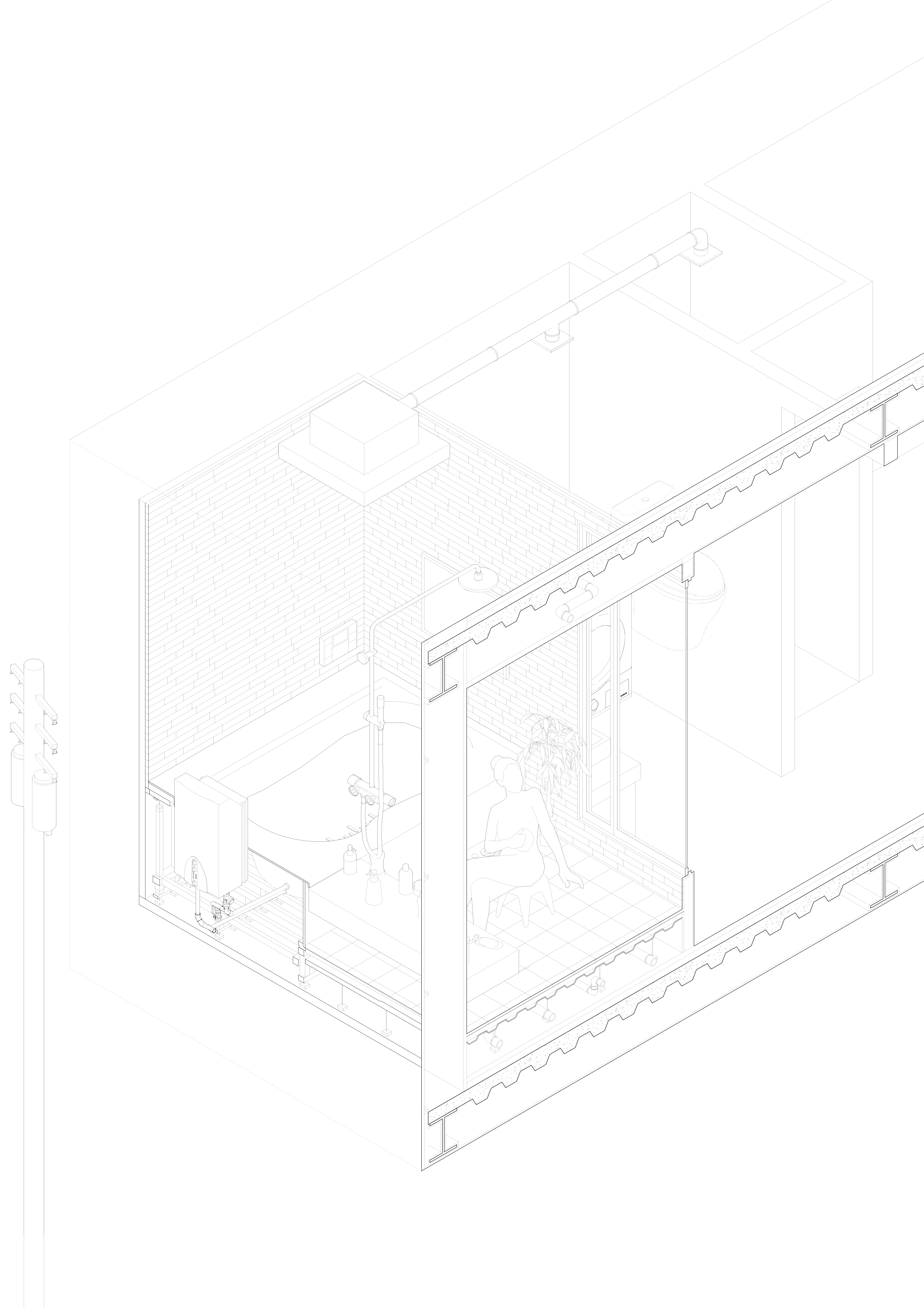The research follows the transformation of the Japanese bath over the last 150 years from a set of portable objects – each designed for its respective distinct purpose yet not bound to a particular space – to a bathroom integrating the different elements into a whole unit, including the surfaces of the ceiling, the walls and the floors, as well as the hidden installations for water supply, water heating, sewage disposal, driers, lighting, and so on.
Originating as a service reserved to a privileged few – where the water was brought from the well by a servant, while another servant was responsible for heating it, preparing the bath and maintaining the right temperature – more so than with other devices and spaces in Japan, the history of the private bath is closely linked to social emancipation. In the post-war years the equipment of apartments with baths, facilitated by compact and safe gas-water-heaters, became a symbol of improvements in quality of life under the welfare state, while in more recent years the fully-equipped bath has more and more become a highly technological space of contemporary comfort and body-care, its surfaces imitating wood and tiles and thus, via associations, continuing to establish relationship to its origins, albeit an indefinite one.
Student: Xiaoyue Liu
Konro
One of the paradoxes of modern technology is the synchronicity between the emancipation of individuals and their collective dependency on far-reaching technical networks, fostering on the one side a new relationship between technical objects and their environments, and on the other between the technical objects and their users. The konro (a grill) is a prime example of this transformation in that it links the territorial dimension of gas networks with the intimacy of the individual kitchen. The ostensibly impersonal and faceless realms of the technical object find their correlation in the anthropomorphizing imagery of commercials. In a powerful leap from a matter of fact to a matter of concern, the blue flame of the grill is for instance transformed from a mere chemical process of methane combustion into a primordial symbol of the household, the technical object into an animated cyborg. The konro shows, in an exemplary way, how the modern kitchen has been filled by these essentially troubled cultural-technical hybrids.
